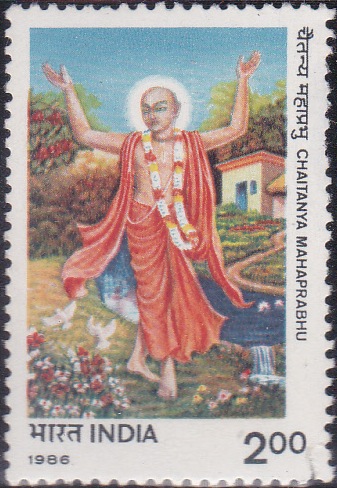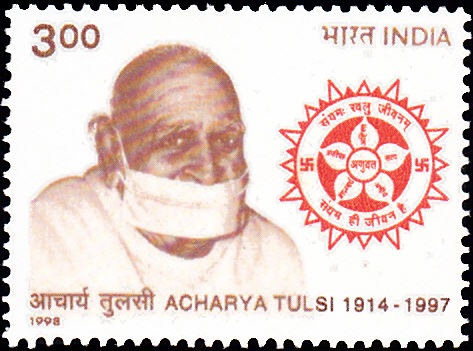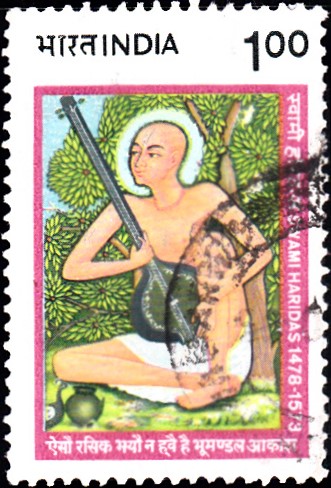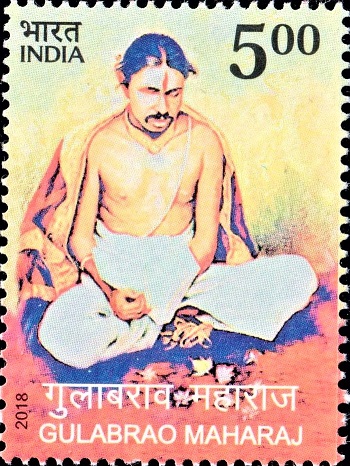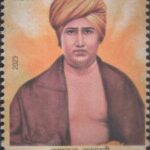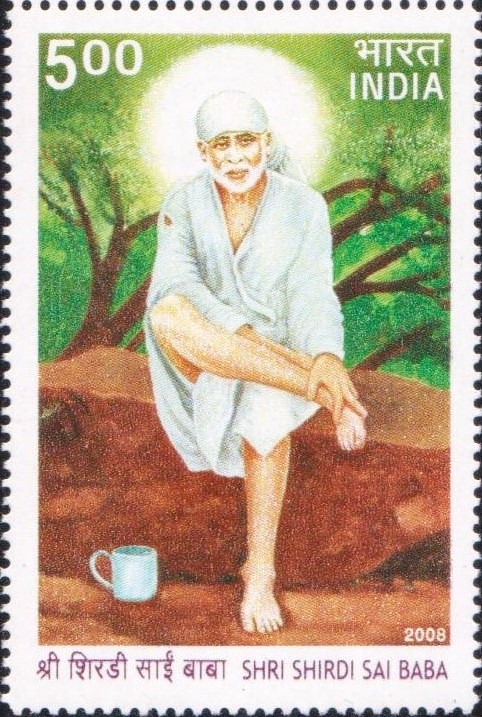
Shri Shirdi Sai Baba
A commemorative postage stamp on the 90th Death Anniversary of Sai Baba of Shirdi, an Indian spiritual master :
 Issued by India
Issued by India
Issued on May 20, 2008
Issued for : India Posts is honoured to issue a commemorative postage stamp on Shri Shirdi Sai Baba.
Credits :
Stamp & FDC : C.R. Pakrashi
Cancellation : Alka Sharma
Type : Stamp, Mint condition
Colour : Multi Colour
Denomination : 500 Paise
Stamps Printed : 0.4 Million
Printing Process : Photogravure
Printer : India Security Press, Nasik
Name : Shirdi Sai Baba
Born on Sep 28, 1835 at Pathri, Parbhani district, Maharashtra, India
Died on Oct 15, 1918 at Shirdi, Maharashtra, India
About :
- The pathos of life leads man to seek for the light that would illumine all levels of consciousness, the light that would liberate man and lift him to a higher existence and fulfilment. Caught in the web of pleasure and pain, man in the captivity of his rigid routine, craves for wisdom, and craves even more for people which eludes all reasoning. Once this discontent is felt, very often it serves as an incentive to further delve into unexplored levels of thought and experience. It is here that once begins to look for inspiration, and a guide as teacher who can reveal to man his sadhana, and help him to grow more and more in spirituality until he finds peace.
- The quest for higher levels of consciousness has contributed to the growth of a kind of super-structure on which our sub-continent’s spiritual tradition is based and Shri Sai Baba is the most glorious manifestation of this tradition. He had the vision to link up the perennial wisdom of the past to progressive modern trends. Sai Baba maintained that true unity, which is the basis of happiness, is not possible, through political creeds or even social reforms or the principles of science. All these may flourish in one era and be obsolete in the next, whereas the unity of spiritual vision is enduring, because the texture of such unity remains unchanged through the ages. The Divine thus becomes the starting point, the nucleus from which we progress to the attainment of the ideal of the fellowship and brotherhood of men. Shirdi Sai Baba hints at complete surrender to the Divine, throwing out all fear from one’s consciousness, for fear is the greatest of all enemies, he compassionately exhorts his devotees to “Cast all your burden on me and I will bear them”.
- Sai Baba’s early life was enshrouded in contradictions and mystery. It is stated that he was born of Brahmin parents in the Nizam’s state. In infancy he was supposed to have been deserted by his parents. Legend says that a fakir found the child and took him home. After the fakir’s death, the child was brought up by a zamindar of Selu. Sai Baba first came to Shirdi when he was a lad of 16, and lived there for about 4 years. Then suddenly he disappeared, and after a lapse of years returned to Shirdi in the year 1859.
- With the advent of the Saint of Shirdi, the great and traditional movement of Bhakti, as a Sadhana for attaining salvation, received a tremendous impetus. Sai Baba brought about resurgence to the cult of devotion.
- Conscious of the beauty and power that reside in devotion, Shirdi Sai Baba exhorted men and women to adopt Bhakti as the most rewarding sadhana. Bhakti or love is the most natural and vital feeling of the human heart as loving and being loved fall within the scope of very individual’s normal experience, and one has no need to cultivate love. Sai Baba recognized that the need to adore is inherent in the human heart and, as such, he felt that the sadhana of devotion (Bhakti) could well become the basis of an inter-religious dialogue.
- Sai Baba is his infinite wisdom saw how imperative it was to harmonize people, for he disapproved all dissensions, arguing and quarreling in the name of ideologies and beliefs. In Shirdi in those days a remarkable spirit of love and brotherhood prevailed, for all communities had found a common and unifying interest in the divine personality of Shri Sai Baba. Each individual saw it him a personification of his own favourite deity, an image of his own chosen ideal, and worshipped him as such. Through all this maze of contrary beliefs, Sai Baba lived on unperturbed with perhaps a glint of humour in his eyes for the speculations about his caste and creed. Sai Baba discouraged the questions regarding whether he was a Hindu or a Muslim.
- The Saint of Shirdi recognized and emphasized the beauty of a Guru-guided life. He felt that the very ethos of our nation could be found in this enduring and endearing association of the Guru and his disciples.
- Sai Baba taught only through a medium of the spoken word in the pattern of our ancient sages. His words transcended the limitations of time and distance, and spread far and wide even to the remotest of villages. Sai Baba‘s teaching and life have captured the imaginations of the people in India and abroad as well.
- “Sai is not this three and a half cubic feet of visible body residing in Shirdi“, Baba himself was found of repeating.
- On 15th October 1918 he passed away, breaking, forever the barriers of existence.
- The Saint of Shirdi left behind a rich heritage of enlightened followers. In the last years of his life, he said to his devotees with a mother’s solicitude, “Do not grieve when my body passes away. My tomb will live and move and speak with all those who make me their sole refuge“.
- Text : Taken from website dedicated to Shri Shirdi Sai Baba.
Subscribe
Login
0 Comments



